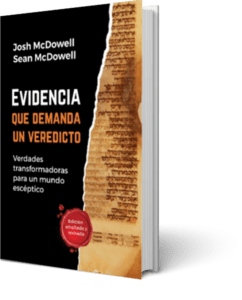Old Places and Items Help Scholars Validate Scripture!
La Arqueologia, a relative newcomer among the physical sciences, cannot “prove” the Bible is true. But archeology ha provided exciting and dramatic confirmation of the Bible’s accuracy.
Per Yale archeologist Millar Burrows, an expert on the Dead Sea scrolls who was a professor emeritus at Yale Divinity School, archaeology has “unquestionably strengthened confidence in the reliability of the Scriptural record.”
Whole books are not large enough to contain all the finds that have bolstered scholastic confidence! Isn’t it comforting — and compelling — to know that so much evidence points to the Bible as being trustworthy?
Let’s look at just a few examples of how historical artifacts have validated Luke’s New Testament writings.

Archeology Supports the Amazing Accuracy of Luke’s Gospel
Archeology has absolutely confirmed historical detail that Luke included in his Gospel. Luke’s primary focus in this book is meticulously showcasing who Jesus was — and what He came to do. He did so with facts, not fanciful detail.
At one time, however, scholars thought that Luke had entirely missed the boat regarding the events surrounding the birth of Jesus (Luke 2:1-3). Critics argued that there was no census, that Quirinius was not governor of Syria at that time, and that everyone did not have to return to his ancestral home. But archeological discoveries show that the Romans had a regular enrollment of taxpayers and also held censuses every fourteen years.
This procedure began under Augustus. Further, we find that Quirinius was, indeed, governor of Syria around 7 BC. It is supposed that he was governor twice, once in 7 BC and again in AD 6 (the date ascribed by Josefo.) A papyrus found in Egypt gives directions for the conduct of a census.
Concerning Luke’s ability as a historian, Sir William Mitchell Ramsey, one of the greatest archeologists to have ever lived, said, after 30 years of study, that, “Luke is a historian of the first rank; not merely are his statements of fact trustworthy…this author should be placed along with the greatest of historians.”
As seen in the light of archeological evidence, the New Testament reflects the conditions of the second half of the first century AD, not the conditions of any later date. Historically, it is of the greatest importance that this has been so effectively established.
Archeology Supports the Reliability of Acts and the Epistles
Archeology has helped to identify the accuracy of detail in Luke’s writing of Acts. It’s impressive! Thanks to archeological finds, most of the ancient cities mentioned in the book of Acts have been identified. The journeys of Paul can now be accurately traced as a result of these finds. In all, Luke names 32 countries, 54 cities, and nine islands without error!
In some cases, Luke’s usages of certain words were criticized by skeptics. For example, Luke refers to Philippi as a “district” of Macedonia, by using the Greek word meris. Some argued that meris referred to a “portion,” not a “district.” Archaeological excavations, however, have shown that this very word was used to describe the divisions of the district.
Still another case is Luke’s usage of politarchs to denote the civil authorities of Thessalonica. Since politarch is not found in the classic literature, Luke was again assumed to be wrong. (Poor Luke!) However, some nineteen inscriptions that make use of the title have been found. Interestingly enough, five of these are in reference to the city of Thessalonica. One of the inscriptions was discovered in a Roman arch at Thessalonica, and in it are found the names of six of that city’s politarchs.
Historian Colin Hemer catalogued numerous archeological and historical confirmations of Luke’s accuracy in his book The Book of Acts in the Setting of Hellenistic History. In his detailed report, Hemer included specialized details, which would not have been widely known except to a contemporary researcher, such as Luke, who traveled widely. These details include exact titles of officials, identification of army units, and information about major routes. He also corroborates the dates of known kings and governors with the chronology of Luke’s narrative.
E. M. Blaiklock, previously a professor of classics at Auckland University, echoed Ramsey’s assessment of Luke by concluding, “Luke is a consummate historian, to be ranked in his own right with the great writers of the Greeks.”
Now we’re showing Luke, the meticulous historian, some due respect!
Will You Believe Luke’s Facts?
Some refuse to believe the Bible is true simply because none of the original Scriptural manuscripts (autographs) still exist. Yet they’ll trust that secular Classic literature has been reliably handed down — though autographs are missing for those works, as well. Here’s the thing about the Bible: when the facts are historically examined, they stand up. Luke is just one example of the Bible serving as a trustworthy resource, not fanciful drivel.
Others refuse to take the Bible as God’s Word because no one can prove that God actually exists. We can clearly see evidence of His design all around us, yet it’s ludicrous to them to credit God as being the Creator. They are only willing to accept what science proves. Interestingly, science can’t prove the origins of the universe, yet is willing to go to great lengths to assert the “truth” of secular theories.
Don’t buscarlo to disbelieve the Bible simply because the scientific community says it is bunk. Nor simply on the basis of your personal doubts. Search for answers! Absolute truth — contrary to what our postmodern society teaches — does exist.
Some of the greatest Scriptural finds to date have been made by persons, just like you and me, who decided to meticulously hunt for the truth. Some started as atheists even — including Josh McDowell.
Says Josh: “As a young scholar I asked this question: “How can I prove that Christianity is false?” I traveled to many libraries in the U.S. and Europe in my search to find the answer. After trying to shatter the historicity, validity, and authenticity of the Scriptures, I came to the conclusion that the Bible is historically trustworthy. I also discovered that if one discards the Bible as being unreliable, then one must discard almost immediately all literature of antiquity.”
He adds, “One problem we constantly face is the desire on the part of many to apply one standard or test to secular literature and another to the Bible. One must apply the same test, whether the literature under investigation is secular or religious. Having done this, I believe we can hold the New Testament in our hands and say, ‘It is trustworthy and historically reliable.'”
Next week we’ll address the question “Has the Old Testament been reliably transmitted?”

Esta publicación del blog destaca el clásico apologético de Josh y Sean McDowell, recientemente revisado, Evidencia que Demanda un Veredicto. Estamos seguros de que este recurso totalmente actualizado y ampliado será una herramienta eficaz de evangelización para ti, y fortalecerá tu fe respondiendo a las preguntas más difíciles que te lancen los escépticos. Sabe lo que sabes, porque es verdad. ¡Pero comparte esta verdad con AMOR!



